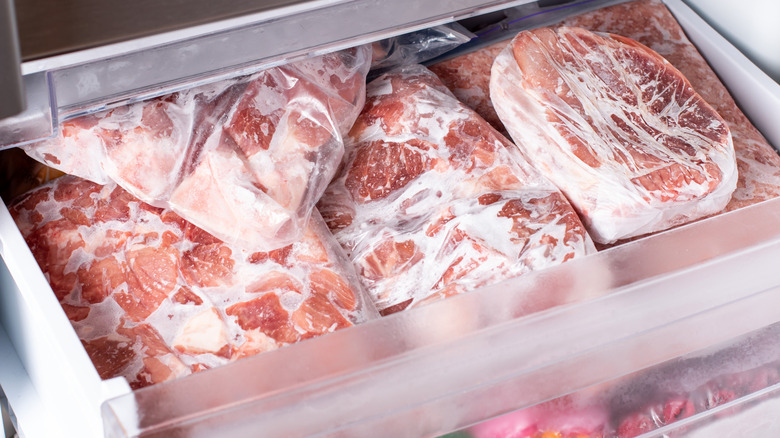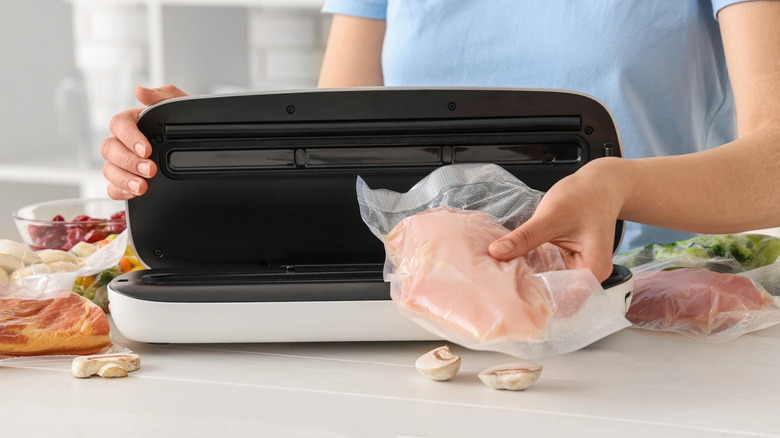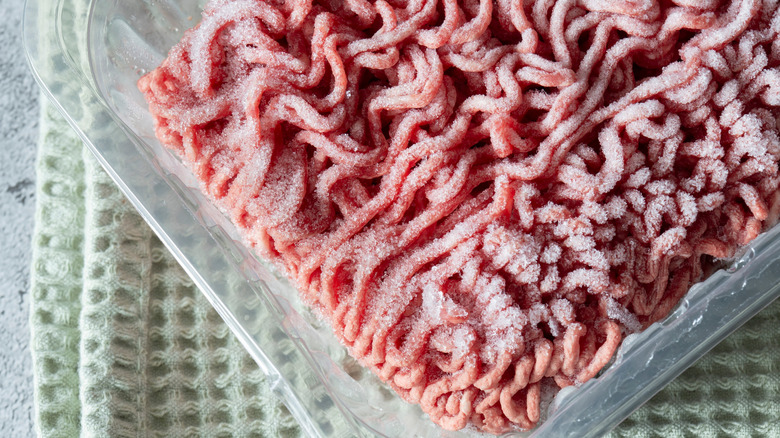How Long Can Meat Be Stored In The Freezer?
We may receive a commission on purchases made from links.
Shopping at warehouse stores can mean great deals on meat, but unless you have a large family, you might struggle to eat it all before it starts to spoil. That's why many of us freeze raw meat for later use — but how long is "later," and when does it become too late?
Uncooked beef, such as steak, can stay in the freezer for between four months to a year, while ground beef should only be kept for up to four months. Whole chickens and turkeys remain good for up to a year, but dark chicken parts are best used within six to nine months, and chicken breasts stay at peak quality for about six months. Pork is similarly best consumed within six months, though pork sausage should only be kept frozen for up to two months, and raw bacon for just one month.
It's important to note that meat will actually remain safe to eat indefinitely in the freezer; the super-cold temperatures make it impossible for bacteria to grow and thrive. However, these time guidelines reflect how long the meat stays at its best quality and most palatable state. If you do a good job of packaging the meat for the freezer, it may last a bit longer; a more haphazard job might mean those steaks are subject to freezer burn sooner.
How to prep your meat for the freezer
As mentioned, how you prepare your meat for the freezer can really make a difference in how long it maintains its peak quality. For example, if you are throwing your pork chops in with only the packaging in which you purchased them, that thin layer of plastic is not going to hold up to the zero-degree temperature. However, adding an extra layer, such as a freezer-safe gallon bag, will greatly improve the chances of your meat lasting as long as the recommended guidelines.
If you want to eschew the store's packaging altogether, you can wrap individual meat pieces in plastic wrap or aluminum foil and then place them in a freezer-safe bag, making sure to push out as much air as possible. And actually, if you really want to give your meat the royal treatment when freezing it, invest in a vacuum sealer, like this one from MEGAWISE. These machines remove not only the air, but also the moisture from the packaging, thus eliminating the two elements that cause freezer burn and bacteria or mold. Whichever method you choose, always remember to label the package with the date so you can keep track of how long the meat has been stored.
How to thaw frozen meat and handle freezer burn
Here's a bit of advice to take to heart: Don't ever let your frozen meat thaw on your countertop at room temperature. This can cause the meat to sit in the temperature range of 40 to 140 degrees Fahrenheit, a dangerous zone where bacteria thrive. Instead, thaw your meat in the refrigerator overnight. It does require some planning ahead, but your stomach will thank you. If you need the meat to thaw faster, you can place the package in a bowl of cold water, changing the water every 30 minutes, or use the microwave. With either of these quicker methods, however, you must cook the meat immediately after thawing.
Then there's the matter of freezer burn, which is characterized by a crystalline appearance on — and discoloration of — your food. Maybe you kept your freezer too empty, or perhaps you didn't push out all the air from the plastic bag. Whatever the case, freezer-burned food is still safe to eat, though you might have to endure some unpleasant changes in taste and texture (freezer burn has a way of making meat tough). You can mitigate its effects by cutting off the freezer-burned portions of the meat while it is still frozen, after it has thawed, or even after you've cooked it.



